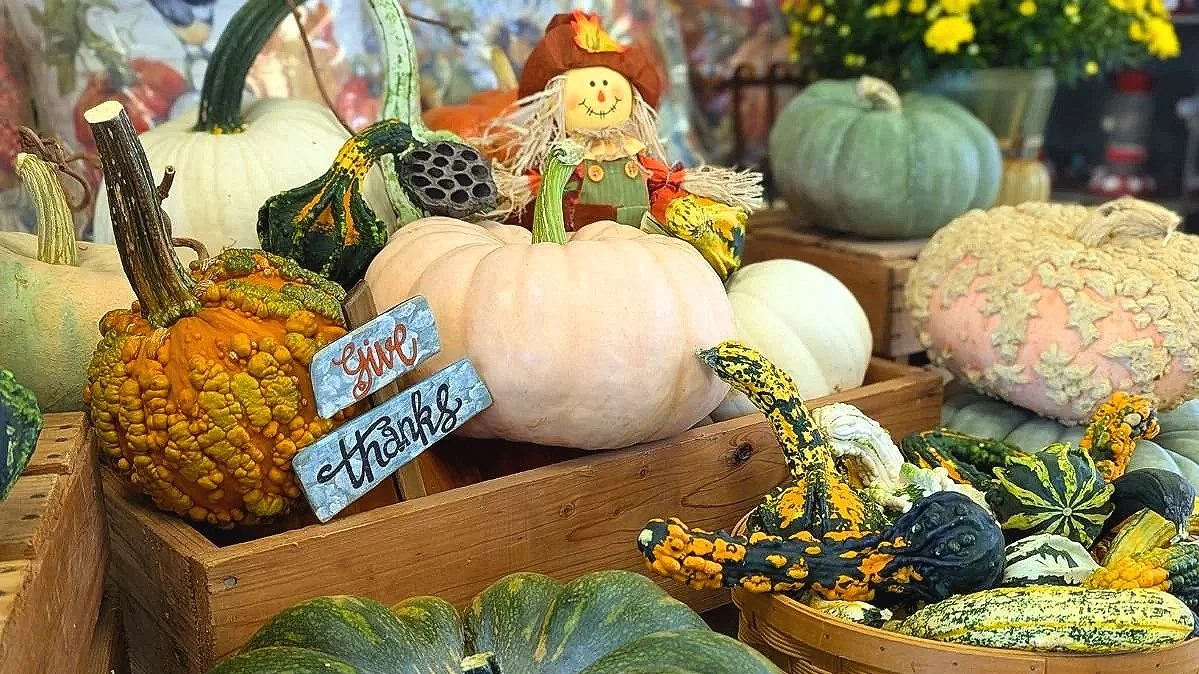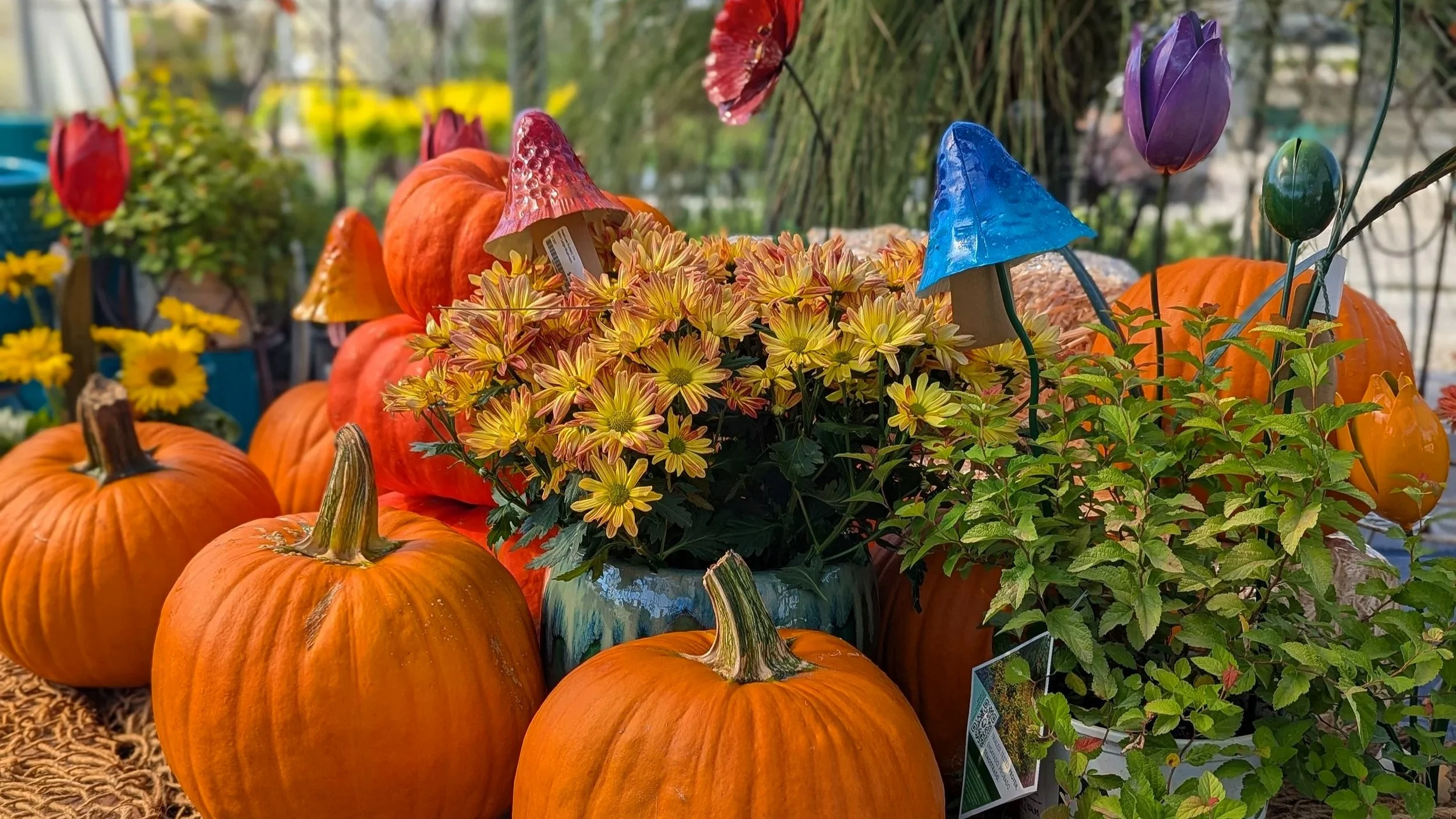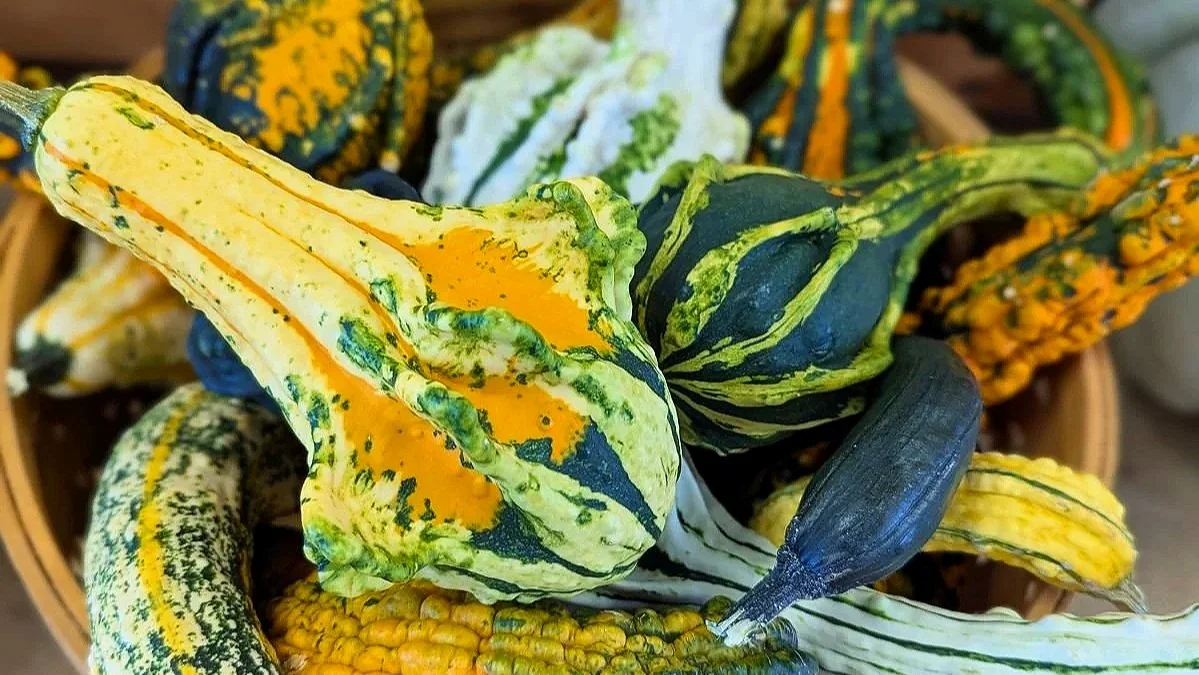Porch Perfect: Your Guide to Fall Pumpkin Displays
The crisp air, the scent of woodsmoke, and the rich color shift in the garden all point to the season of harvest. And nothing captures that spirit quite like the pumpkin!
As gardeners and home decorators, we see the pumpkin as more than a simple prop—it's a versatile fruit (yes, it's a fruit!) that brings both beauty to the porch and flavor to the table. But selecting the right pumpkin can be surprisingly complex. Do you choose the thin-walled Jack-O'-Lantern for carving, or the dense Sugar Pie for baking? What's the difference between that bumpy gourd and a true pumpkin? How do you use pumpkins to create a fall display that will wow your neighborhood?
This guide breaks down what you need to know to create a stunning, long-lasting fall display and offers some of the best plant pairings for pumpkins.
Varieties of Pumpkins
Pumpkins are all members of the Cucurbita family (which includes squash and some gourds), but they have been bred for different purposes. One purpose is to be decorative while the other purpose is for table fare.
Decorative Pumpkins
Decorative pumpkins are grown for their beauty and how easily you can carve them. They are often large and round with thin walls. Their flesh is watery and stringy.
To pick the best pumpkin for decorating that will also be a long-lasting pumpkin, look for smooth skin and an intact, thick stem.
Types of Decorative Pumpkins
A popular decorative pumpkin type is the classic Jack-O’-Lantern, which is usually a Howden or Connecticut Field variety. This is the traditional smooth and orange pumpkin.
If you want a different color in your fall display, then consider purchasing a white pumpkin, which is usually a Casper, Lumina, or Flat White Boer variety. You can add even more color to your fall pumpkin display by including blue (Jarrahdale variety) or green (Marina di Chioggia) pumpkins.
If you want different heights of pumpkins, then add a mini pumpkin, such as a Baby Boo or Jack Be Little pumpkin. To give texture to your fall display, include a warty pumpkin, such as a Galeux d’Eysines, Black Futsu, or Knucklehead pumpkin.
Eating Pumpkins
Pumpkins grown for eating tend to be smaller than decorative pumpkins. They are often dense and heavy for their size, and their flesh is sweet and less fibrous than decorative pumpkins.
To choose a pumpkin for eating, look for a pumpkin that has firm and uniform skin. It should feel heavy considering its size.
Types of Eating Pumpkins
Eating pumpkin varieties include Sugar Pie, Sugar Bush, Baby Bear, Long Island Cheese, and Cinderella. You can also eat Honeynut, Red Kuri, Kabocha, and Fairytale pumpkins.
What can you do with pumpkins other than make pumpkin pie? Well, you can make breads, soups, sauces, cookies and even pumpkin quesadillas (no, we’re not kidding).
Can You Use Eating Pumpkins for Decoration?
Although you can eat these pumpkin varieties, you can also use them to decorate your fall display. In fact, Fairytale pumpkins look very cute as a stacked pumpkin display. But we don’t recommend carving them if you plan to eat your pumpkins, because you’ll be leaving the pumpkin flesh open to bacteria.
How to Create a Beautiful and Lasting Display
The perfect fall porch display combines varied textures, colors, and heights to maximize visual impact.
Tips for Longevity and Preventing Rot
An uncarved, healthy pumpkin can last between 8 to 12 weeks on your porch, which means that you can have your pumpkins beautiful and vibrant from late September through Thanksgiving if you take good care of them. Here are some tips on preserving your pumpkins:
1. Keep the Stem Intact
The stem is the natural seal. If the stem is broken or missing, bacteria can enter and cause the pumpkin to rot.
2. Clean the Surface
When you bring home your pumpkin, wash the entire pumpkin exterior with a solution of 1 tablespoon of bleach per 1 quart of water. This kills surface bacteria and mold spores that can cause decay.
3. Preserve Carved Edges
For carved pumpkins, coat all cut edges and the interior flesh with a thin layer of petroleum jelly or cooking spray. This coating slows moisture loss while preventing the edges from shriveling and browning quickly.
Best Plants for Pairing and Structure
For a vibrant, beautiful autumn arrangement, surround your pumpkins with plants that thrive in cooler weather and offer complementary textures and colors. Here are some of our favorite plants to pair with pumpkins.
Mums
Mums are iconic fall flowers that will add texture and color to your fall display. Mums come in a variety of colors, including tallow, bronze, burgundy, pink, red, and orange.
Ornamental Cabbage or Kale
Ornamental cabbage and kale are great for providing dramatic texture to your fall display. Their thick, ruffled leaves come in green, purple, blue and white. Their colors intensify as the temperature drops, which makes ornamental cabbage and kale perfect greenery for any fall display.
Ornamental Grass
Use ornamental grass to add height and movement to your fall porch display. You can use Purple Fountain Grass for an airy texture or pink muhly grass, which turns pink in the fall.
Dianthus
Dianthus plants have small flowers with frilled petals. They come as white, red, pink, or purple flowers, and they have a divine smell that will perfume your porch. Some people describe the scent as clove-like, while other people feel like they smell fresh and sweet.
Use dianthus plants to bring a heavenly scent to your fall porch display and to create pops of vibrant color.
Dianthus plants do best in the sun, but they can tolerate partial shade.
Hay or Corn Stalks
Hay and corn stalks bring a nice fall harvest vibe to any fall display. They will also provide rustic texture and vertical appeal. Plus, hay and corn stalks can act as backdrops to your fall display to help make your pumpkins and other plants stand out.
Gourds
Gourds are hard-shelled fruits that are typically used for decoration, art, or utilitarian purposes (such as making bowls or water containers). Include gourds in your fall display to add color, variety, texture, and that little special something to your fall display.
Visit Head-Lee Nursery for Fall Plants, Decorations, and More!
At Head-Lee Nursery, we have over forty years of horticultural experience, and we’re happy to serve the upstate South Carolina community.
Stop by our Seneca, South Carolina, garden center today to select your perfect gourds, pumpkins, and fresh flowers to craft your unique fall porch display. We have all the seasonal decor you need to beautify your home for fall, and our friendly and knowledgeable staff is happy to help you. You can also subscribe to our newsletter for seasonal plant picks, events, and specials.
Also, if you want to learn more about gardening in South Carolina, then don’t miss our Fall Garden Gathering event on October 17, 2025 and October 18, 2025. It will be the must-attend fall event in Seneca, and we’ll have numerous gardening experts, guest speakers, and free food!






